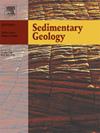Integrated investigation of rare earth elements, molecular fossils, and stable isotopes in drill cores from deep-buried strata in the Yangtze Block: Implications for the Early Cambrian sedimentary environments
IF 2.9
2区 地球科学
Q1 GEOLOGY
引用次数: 0
Abstract
Geological records of the Lower Paleozoic indicate the co-occurrence of large-scale geo- and bio-events, including the diversification of marine complex life and widespread phosphogenesis, making the Early Cambrian aquatic environments a long-standing subject of global interest. Despite extensive research, the interplay between paleoclimate, continental chemical weathering, seawater redox conditions, and salinity during the Cambrian Explosion remains debated. To address this, we conducted geochemical analyses (e.g., XRF, ICP-MS, MRM GC–MS, and IRMS) and optical microscopy on drill cores from the Early Cambrian deep-buried strata (>4 km depth) in an intrashelf basin within the Yangtze Block. Geochemical proxies, including pronounced negative cerium anomalies (as low as 0.20) and a positive pristane-to-phytane ratio excursion, indicate an expansion of oxic waters between ∼531 and 526 Ma, while widespread anoxic conditions prevailed around 531 and 526 Ma. Climate fluctuations between arid and humid periods are inferred from major elements (e.g., Al, Fe, Mn), trace element ratios (e.g., Rb/Sr, Sr/Cu), and rare earth element parameters (e.g., ΣLREE/ΣHREE, Y/Ho). High gammacerane index values (up to 0.41), the presence of β-carotene, elevated Sr/Ba ratio, and δ18O values (up to −4.87 ‰) suggest periods of high salinity and evaporative conditions during arid phases. Organic geochemical signatures, including a high carbon preference index (CPI > 1) and highly negative δ13C values (<−24 ‰), indicate a biological origin of organic matter, with measurable 2-methylhopane (up to 2.48 %) and 4-methylsterane indices (up to 20 %) suggesting contributions from primary producers such as cyanobacteria, alphaproteobacteria, and dinoflagellates. The co-occurrence of oxygenated, highly saline, and evaporative Ca-P-rich waters with the diversification of small shelly fossil assemblages (SSFs 2 and 3) suggests that the studied intrashelf basin provided a favorable setting for the emergence and diversification of complex life. These findings offer new insights into the paleoenvironmental conditions that shaped marine ecosystems during the Cambrian radiation.
扬子地块深部岩心稀土元素、分子化石和稳定同位素综合研究:对早寒武世沉积环境的启示
下古生代的地质记录表明,大尺度的地质和生物事件共同发生,包括海洋复杂生物的多样化和广泛的磷生作用,使早寒武纪水生环境成为长期以来全球关注的课题。尽管进行了广泛的研究,但在寒武纪大爆发期间,古气候、大陆化学风化、海水氧化还原条件和盐度之间的相互作用仍然存在争议。为了解决这一问题,我们对扬子地块陆架内盆地早寒武世深埋地层(>; 4km深度)的岩心进行了地球化学分析(如XRF、ICP-MS、MRM、GC-MS和IRMS)和光学显微镜分析。地球化学指标,包括明显的负铈异常(低至0.20)和正的原烷与植烷比值偏移,表明在~ 531至526 Ma之间氧水扩张,而在531至526 Ma周围普遍存在缺氧条件。从主要元素(如Al、Fe、Mn)、微量元素比率(如Rb/Sr、Sr/Cu)和稀土元素参数(如ΣLREE/ΣHREE、Y/Ho)推断干湿期之间的气候波动。高伽马蜡烷指数值(高达0.41)、β-胡萝卜素的存在、Sr/Ba比值的升高和δ18O值(高达- 4.87‰)表明在干旱期存在高盐度和蒸发条件。有机地球化学特征,包括高碳偏好指数(CPI >;1)和高度负的δ13C值(<−24‰)表明有机质的生物起源,可测量的2-甲基藿烷(高达2.48%)和4-甲基甾烷指数(高达20%)表明蓝藻、α变形菌和鞭毛藻等初级生产者的贡献。富氧、高盐和蒸发富钙磷的水体与小壳类生物化石组合(ssf2和ssf3)的多样化共存,表明所研究的陆架内盆地为复杂生命的出现和多样化提供了有利的环境。这些发现为研究寒武纪辐射期间形成海洋生态系统的古环境条件提供了新的见解。
本文章由计算机程序翻译,如有差异,请以英文原文为准。
求助全文
约1分钟内获得全文
求助全文
来源期刊

Sedimentary Geology
地学-地质学
CiteScore
5.10
自引率
7.10%
发文量
133
审稿时长
32 days
期刊介绍:
Sedimentary Geology is a journal that rapidly publishes high quality, original research and review papers that cover all aspects of sediments and sedimentary rocks at all spatial and temporal scales. Submitted papers must make a significant contribution to the field of study and must place the research in a broad context, so that it is of interest to the diverse, international readership of the journal. Papers that are largely descriptive in nature, of limited scope or local geographical significance, or based on limited data will not be considered for publication.
 求助内容:
求助内容: 应助结果提醒方式:
应助结果提醒方式:


